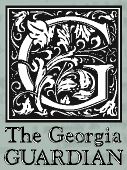

Coffee earns its place in culture
The world becomes a brighter place with the help of caffeine
Photo by Russ Bryant
Coffee beans can be roasted in a variety of ways, from restaurant-grade to gourmet. The difference shows up in the price per pound and has to do with how bad beans, which are either really light or very dark, are sorted.
By Edward Fulford
(10/1/99 issue)
Coffee: that divine morning elixir, without which many find it nearly impossible to start the day. People around the world have enjoyed coffee's earthy, smoky aroma and the caffeine the drink delivers for centuries.
Constance Preston, manager at Savannah Coffee House, said there are many stories on who discovered coffee and how.
"The most common is a goatherder named Kaldi, in Africa," she said. "Coffee grows on a plant, like a red cherry. He observed his goats eating some of these cherries and saw the things starting to dance and get excited afterwards."
Constance said the story goes that the humble goatherd thought the berries might have a medicinal use.
"He realized he got happy and a lot of energy after eating these things," Preston said.
Today some of the oldest varieties of coffee come from Africa, such as mocha and mocha yemen.
"Some of your best coffees come from very small firms," she said. "They're still done very organically."
Preston said many of the African farmers produce the coffee by much the same process used when traders first spread coffee around the world.
Coffee is grown only in a narrow band around the earth's equator, mainly in mountainous regions.
Preston said the combination of altitude and heat produces the best coffee beans.
The three major exporting areas are South America - with Brazil exporting more than competitors such as Guatemala, Peru and Costa Rica - Indonesia and Africa.
"On an average, your Indonesians tend to be a heavier-bodied coffee, with less acidity," Preston said. "Your South American ones tend to be sort of medium-bodied, medium acid, and your African ones tend to be higher acidity, but have some of the best flavors."
Preston said in her opinion, the African varieties are some of the more interesting. She said some Ethiopian coffees have an aftertaste like wine or berries. Other African varieties have aftertastes similar to chocolate.
No coffee is grown in the continental United States, although some grows in Hawaii.
"You pay an outrageous price for it, and it's not necessarily a good quality coffee," Preston said about the Hawaiian coffee. "It's just that it's the only non-Third World country producing coffee. You're paying for American labor."
After the coffee is grown and berries are picked, the fruit of the coffee bushes then goes through a fermentation process. Preston said this process differs with each producer, from large and technical to very organic procedures.
However it is done, the skins and flesh of the red berries are removed, baring the hard, dense green coffee bean.
It is these green beans that are packed in burlap sacks for shipping overseas.
Preston said, in America, coffee importers on the east and west coasts buy the beans and then resell them to individual roasters.
She said the quality of the beans ranges from restaurant-grade to gourmet coffee - the difference being gourmet coffee is better sorted, with bad beans culled.
"You have things called floaters, which are bad beans," she said. "They're really light beans, or dark.
"A few of them in a pound can greatly impact the taste of that coffee."
Green restaurant-grade coffee beans generally cost around $2-$3 per pound. Gourmet coffees are closer to $7 a pound, wholesale before roasting.
Preston said gourmet coffee prices vary greatly, depending on the type of coffee and the size of the producer.
"Coffee is also going to vary depending on different factors around the world, like the weather," she said. "You know, Indonesian coffees have gone up in price because of the forest fires they had there last year."
The largest power in setting coffee prices worldwide is Brazil, the world's largest coffee-producing country, according to Preston.
She said the prices will also flow up and down with the stock market, much as any other commodity product.
"Coffee prices do come down, they don't just keep going up," Preston said. "They come down when you get good crops."
However, the consumer isn't likely to see those cost reductions, once the prices are pushed up.
Politics can also affect the price of a cup of Joe.
"You've got a lot of warring African countries, so politics and weather have a big impact," she said.
Once the beans get to a roaster, they are then cooked for a period of time. The length of time they're cooked determines the "roast" they fall into.
City roast is the lightest, and cooked the shortest period of time. The beans are progressively darker with Vienna, French and Italian roasts.
"The longer you roast a coffee, the darker it gets and the more oils come out," Preston said. "You're in fact burning the bean."
And the darker the bean gets, the darker the taste of the coffee.
"Some people want that dark, burnt taste," she said. "They think if the coffee has that dark, burnt taste that it's stronger. That has nothing to do with how much caffeine is in it."
While the particular roast does not effect the caffeine level that greatly, longer roasting times cook out more caffeine, Preston said. Darker roasts also remove more of the bean's inherent flavor, leaving the coffee more acidic.
The perfect cup
There are several things coffee lovers can do to ensure the best cup possible.
Preston's advice is to buy beans as fresh as possible and don't grind them until you make your coffee.
Jeff Meads, owner of Joe Beans Coffeehouse, agreed that fresh beans are a must for good coffee.
"If the beans are all dry-looking, they've been sitting around for a while," he said. "Beans should be somewhat oily and have an aroma to them."
Meads said proper storage is important too.
"You don't want to put them in the freezer," he said. "If you put them in the freezer and take them in and out, you're going to get condensation on the beans which is going to make them rot."
Meads recommends storing coffee in an airtight glass jar in a dark cupboard.
The next big point is to use enough coffee grounds, Preston said.
"Most people use too little coffee," she said. "Industry standards say that it should be two tablespoons for every eight-ounce cup of coffee, up to like eight or 10 cups, and then you cut it down to one tablespoon."
Preston said she uses about a quarter of a pound of coffee for every pot brewed at Savannah Coffee House.
"What most people do, they think it's too strong so they use less coffee and it ends up tasting bitter," she said. "It's like putting a tea bag in and over-extracting it. If you leave a tea bag in hot water too long it over-extracts it, and it gets bitter."
Preston advises making the coffee strong, and then adding a little more hot water after it is brewed to weaken it to taste.
Other hints include using filtered water and keeping the coffee machine clean.
Also, Preston recommends people visit cafés and test different types of coffee until they find one they like.
Air and moisture make coffee go stale, so Preston recommends buying it in small quantities.
"Buy like a quarter-pound at the time. Get them to grind it properly, because depending on which machine you use, you're going to need different grinds," she said. "In a percolator, you'll need a much coarser grind than you will for a Melita, or for a regular drip machine."
For espresso lovers, the word is to just go to a discount store and get a simple $30 home variety to make your own, if you buy one at all. Meads recommends just foregoing such purchases, because the home models can build up the pressure that the $3,000 commercial espresso machines can.
The coffeehouse
Coffee was not always the drink for early-morning alertness or quiet conversation. Turks used to bolt down the stuff before going into battle, to give them an extra jolt.
Preston said the precursor of the modern-day café or coffee house started in Vienna.
"They were called coffee clatches, where well-educated women used to get together and talk," she said.
Coffee houses became popular with men in the United States in the late 1600s and 1700s.
Meads credits their resurgence to the need for a place for people to meet that isn't a loud bar.
Both Meads and Savannah Coffee House owner John Zeuli said they enjoyed having a diverse clientele.
Zeuli said he gets international travelers, some people from the movie crews that come to town and a mixture of locals.
Meads said most of his clients are locals.
"We are in the business district, so we get a lot of the business folks, a lot of the suits," he said. "Jurists, of course, we get a lot of those.
"And just recently, within the past couple of years, we've really been doing well with the students."
Meads said combination of black, white, young and old folks frequent Joe Beans.
He said for some, visiting their favorite café becomes a ritual.
"It's very habit-forming. I've got people who come in three or four times a day," he said. "It's a way of life, coffee. It's a whole kind of way of thinking, I guess."
Meads said coffee lovers have a particular culture of their own.
"You come in and you talk and you kind of get word about what's going on in town today," he said. "You get the new gossip on what's going on, meet friends and make some new ones.
 Constance Preston, manager of the Savannah
Coffee House, tells a common tale of how coffee was first discovered by
an African goatherder. Constance Preston, manager of the Savannah
Coffee House, tells a common tale of how coffee was first discovered by
an African goatherder. |
 Preston recommends coffee-lovers try different
cafés and coffee houses to find which types of java they like best. Preston recommends coffee-lovers try different
cafés and coffee houses to find which types of java they like best. |
Check out more feature stories
Home | Contact Us | Sitemap
| FAQ | Subscribe
| Survey
(c) Copyright 1999. The Georgia Guardian. All rights
reserved.
All photos shown above are by Russ Bryant.
No photo may be reproduced without our written permission.